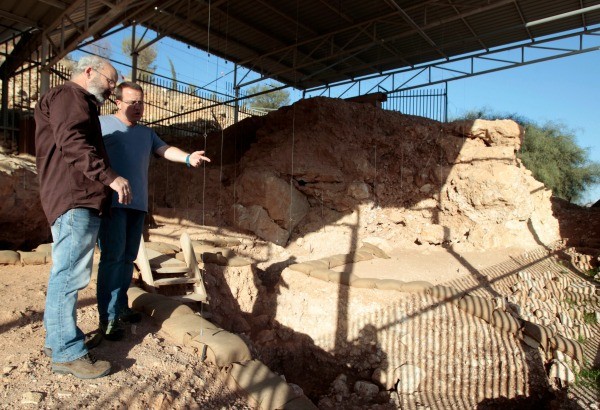The discovery of early flint tools, including a hand axe, which researchers say, is a prehistoric type of "Swiss army knife", and scrapers, is said to present substantiated evidence of human evolution.
They were found alongside thousands of animal remains that included goats, deer and an elephant rib.
Dr. Ran Barkai, a faculty member of Tel Aviv University's Department of Archaeology and Ancient Near Eastern Cultures said the use of Paleolithic stone tools to precisely cut animal fat shows the expansion of a prehistoric man's brain, from merely being vegetarians to eventually eating animal meat to survive.
In 2004, an excavation was made in a Revadimin quarry in Israel by Barkai with his graduate students and this resulted to the discovery of the prehistoric tools.
Recently, analysis was made, using Fourier Transform InfraRed (FTIR). Basically, this process uses infrared rays to determine prehistoric organic compound signatures. Along with wear-and-tear analysis, they were able to discover traces of animal fat on the tools.
"Archaeologists have until now only been able to suggest scenarios about the use and function of such tools," said Prof. Ran Barkai.
He added that this evidence substantiates the use of how our ancestors were able to develop skills in building tools.
In a research published in the journal Plos One, scientists discussed about the three pieces of the puzzle that were put together. These are the expansion of the human brain, change in diet and the development of skills to build more sophisticated tools to provide for biological needs.
Barkai also talked about how these tools were handed down from generation to generation and how men have used them to create hides and cut meat.
Despite developments, these tools were used for over a million years and retained because of the sophistication of these inventions. ,
According to the archaeologist, the hand axe and other flint tools were made by prehistoric men by using stones. From these inventions, they were able to hunt for animals and with a scraper, were able to separate animal meat and skin from the muscle.
Dr. Barkai also told Live Science on how the development of tools was a key factor to humans' increased capacity and need to eat more.
"In this thousand-piece puzzle called archaeology, sometimes we find pieces that connect other pieces together... This is what we have found with the stone tools and animal bones," ended Barkai.



























